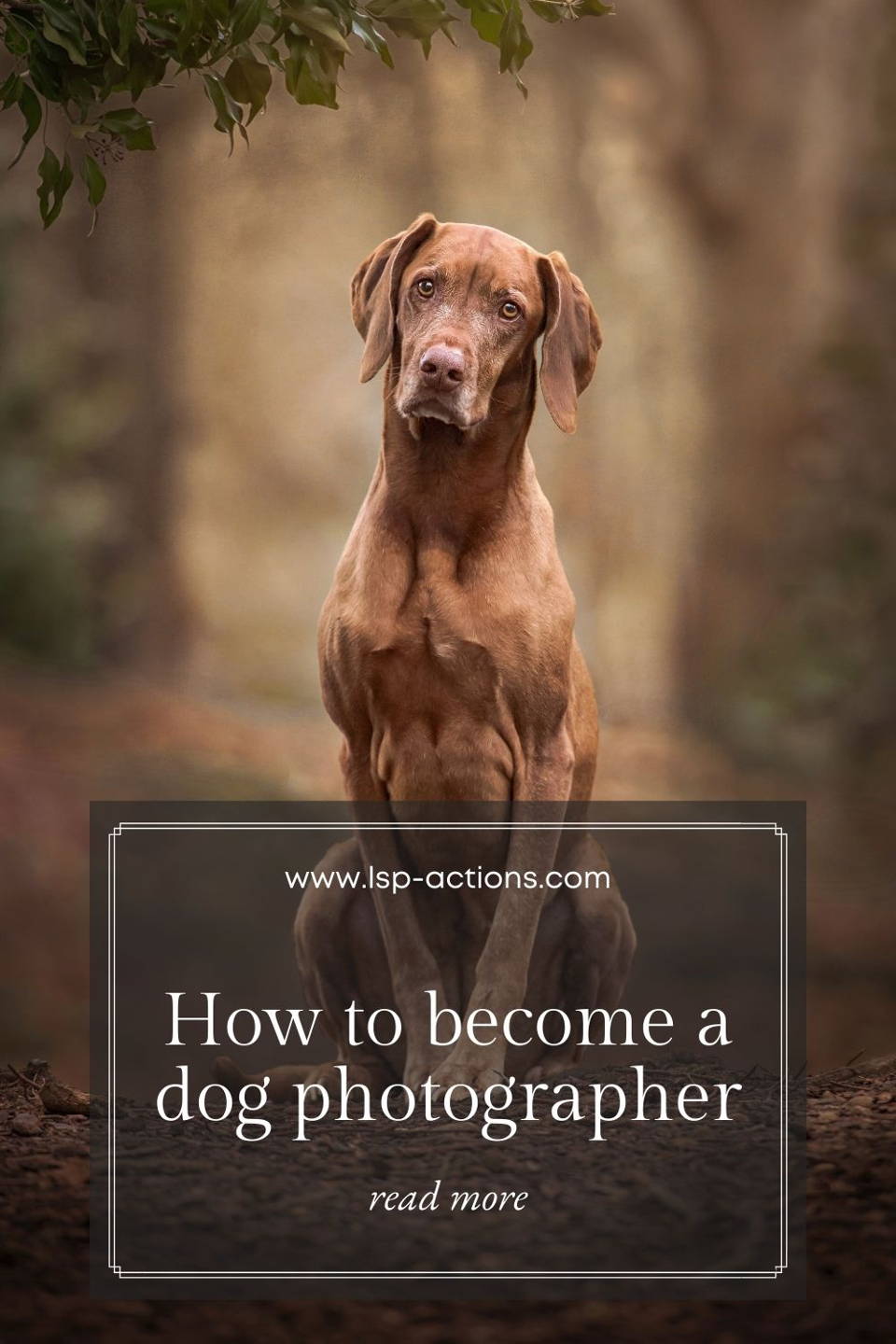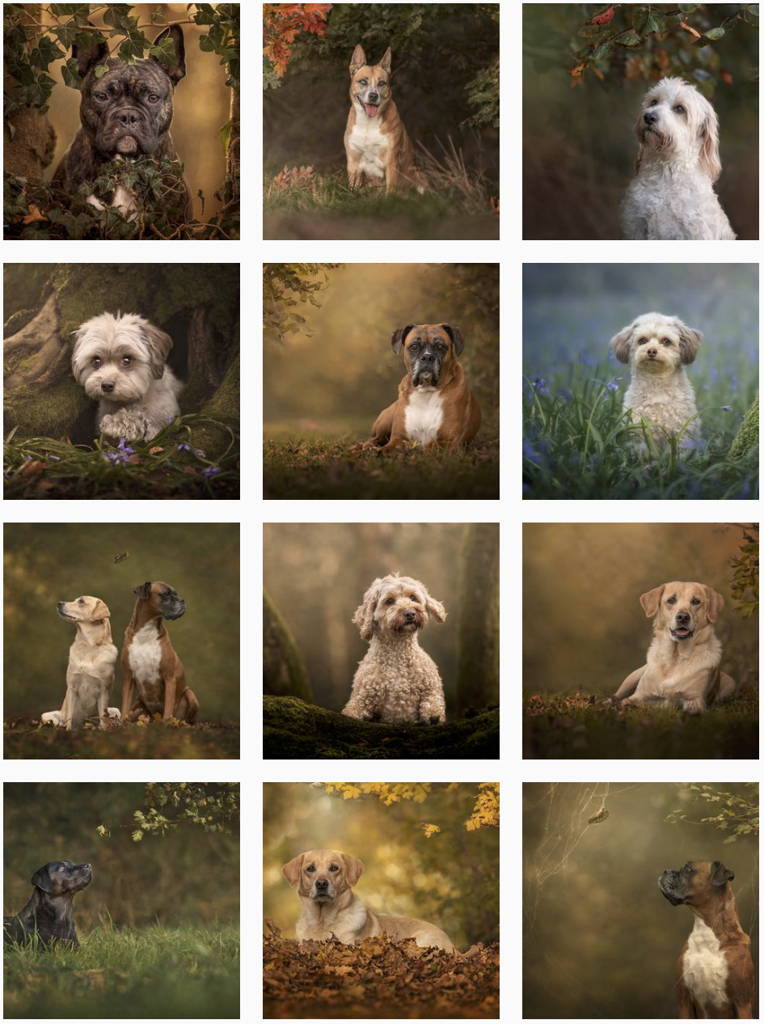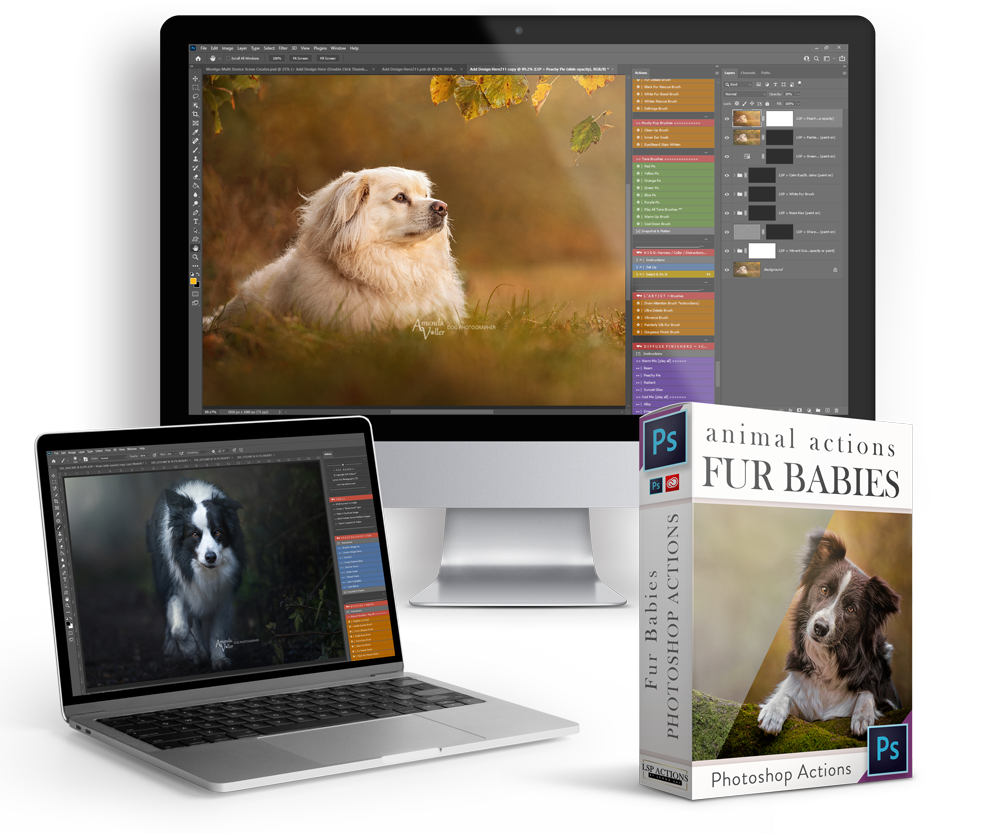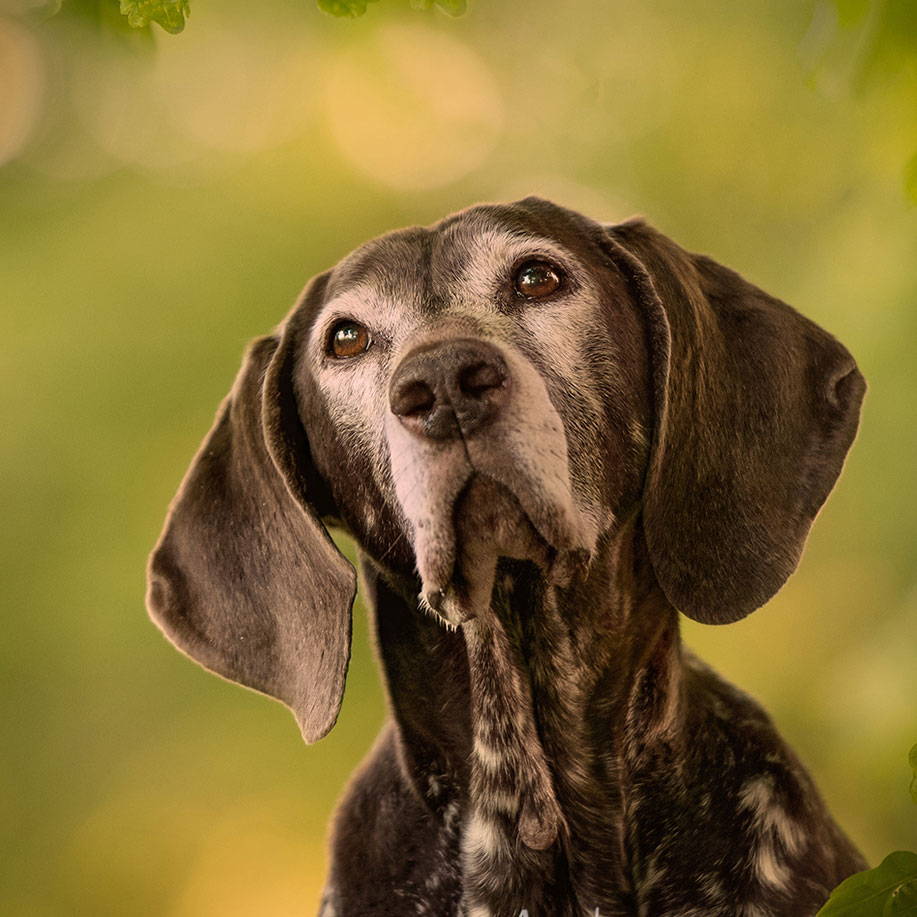
About the author:
Amanda Voller is one of the UK's best known pet and dog photographers.
In this guest blog, Amanda shares a little insight into her journey and her top tips so you can boost your dog photography dream from hobby to business.
Hi, I'm Amanda and I'm here to tell you it's so easy to become a dog photographer! Here’s how I did it (but be prepared to let me off the hook, OK?)
Let's start at the very beginning. Firstly, I bought a camera and took random images of my dog. The type with the sharp shiny nose and out of focus eyes — you know, the ‘go to’ shot, you’ll have seen it everywhere.
Then, I posted to Facebook and sat back and enjoyed all the "it's amazing, you're so talented" comments from friends and family.
So, boom - just like that I was a dog photographer!
I wasn't lying was I? It was a piece of cake.

So, of course, I naturally wanted to share my talents with the world. My dreams were suddenly filled with the amazingly skilled dog Photographer I had become overnight!
Me: “Would you like a photoshoot with your dog?”
Friend:"Hell yeah, you're so incredible... free, right!”
Me: "No! I'm a pro! Throw me a twenty for all images on a disk"
Friend: "Wow so professional!"
Me: *click, click click click click* (780 odd times).
Fist pump, job done.
Trots off home feeling smug.
I get home, load the images up onto the computer... what the? Hang on *peers closer at the screen* NO! That can't be right, there must be something wrong with my camera.
Let's find some sharp images that aren't too dark or bright, so I can actually see the dog. Hang on that one's sharp and that one, right ok.
PHEW!!!
I got some.
Ok, now to Post to Facebook.
Facebook delivers: 50 likes 10 comments
Wow... I've made it!
I walk around with a big grin on my face and knock my increasingly big head on the door frame as I try to leave the room. Oh well, it’s a small price to pay for the adulation.

Then I became bolder, it's all very well my friends and family complimenting my art.
But I wanted more.
I need to share my genius with my peers.
So, I join and post to Facebook photography groups.. lots of them of course, there’s no holding me back now and I need to get my name out there amongst the stars!
Facebook groups deliver tumbleweed: 0 likes 0 comments
My brain implodes EH! ??????????????
So I post more and more of my galleries, bragging, thirsty for peer-reviewed compliments...
And...
The advice starts rolling in:
"learn the exposure triangle"
"use a higher shutter speed"
"open your aperture"
"use your meter"
"fix it in Photoshop"
"study colour harmony"
"look at as much photography as you possibly can"
"learn about composition..."
I was bamboozled!
What language were they speaking? And what is Photoshop? The new ‘photography’ language continued - try Ask Damien, look at Phlearn, try Youtube tutorials, use LSP Actions for editing...

So after this baptism of fire, at 3am that morning with matchsticks in my eyes to keep them propped open, I began my proper exploration into the hidden world of photography.
My ego was instantly replaced with a desire to continuously improve my craft.
I’d stepped into a new world, the kingdoms of YouTube and Google.
And suddenly there were Photographers such as Katrina Parry, her images jumping off my screen and smacking me in my smug face. Meg Bitton. Lisa Holloway... I think you get the picture.
My mind started trying to piece it all together - how?
How are they creating this magic?
And then as the sun began to rise it dawned on me that it's not easy and perhaps I wasn’t a dog photographer... quite yet.
So, for breakfast I ate a great big slice of humble pie, then I picked up my camera and took my dog for a walk.
We all started somewhere and that was how my journey began.
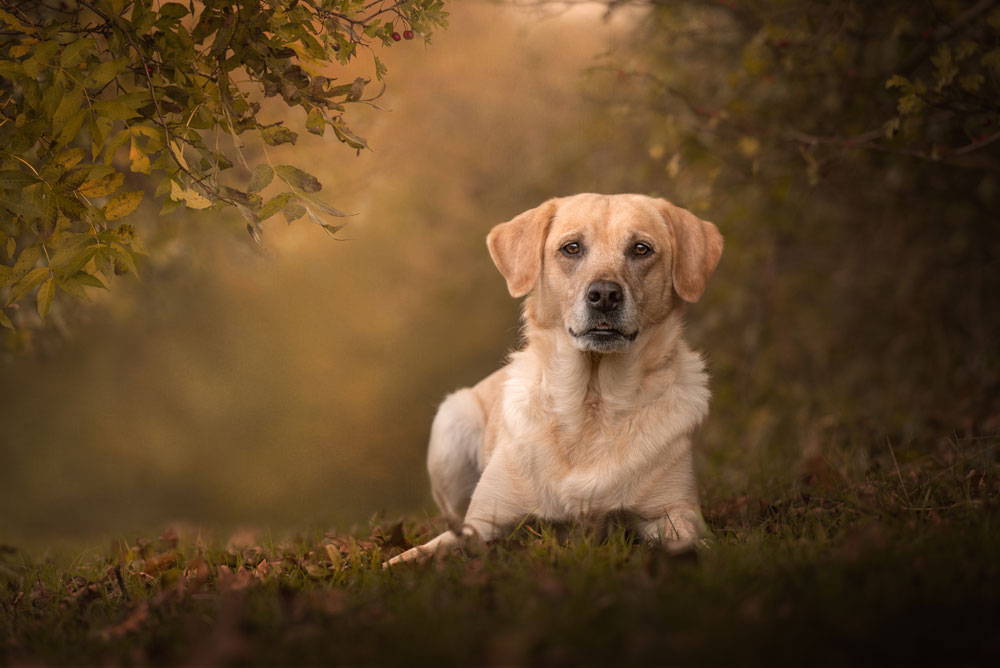
Even now I don't consider myself an expert but I do know what I like and how to achieve it. So, with that in mind I'm going to share a few pointers to think about before you head out with the fur babies...
1. PRACTISE: Look at as much photography as you can, figure out what it is that draws you to certain images. Is it the light? Is it backlit? Is it sunny, dark and moody, bright or bold? You'll soon pinpoint what gets the old juices flowing. Study and practise achieving this look in your photography.
Learn your lenses, go into manual mode and experiment with your aperture (this is your F-Stop). The lower the f-stop, the shallower the depth of field and you'll get those gorgeous blurred backgrounds — make sure the subject is further away from the background than they are from you.
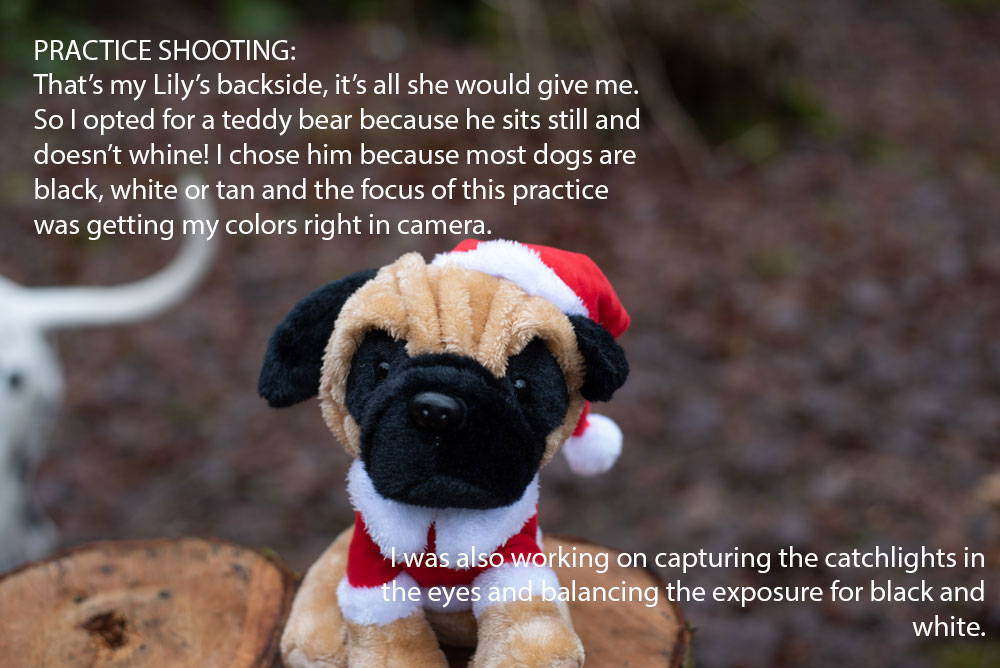
2. PLAN: I always know my location, I scout the woods with my phone camera and snap. I look for where the light direction is coming from and how it will look at different times of the day. I look for locations that can offer versatility. There’s nothing like dumping all your gear down and having all your shots a few feet away. Sometimes I get lucky, sure *whoop*!
I study the background and look for as much light as possible. I'll give a beautiful tree trunk a miss if the background has blocks of dark shadows or bright patches and even the colour of the foliage will affect my decision. I also love to find out as much as I can about the client and their dog. It can really help when trying to capture them.
Plan what images you want to get. Don’t be me when I started out - walking around the woods with a client trying to think what to do next and just going blank because everywhere you turn there's too much light or not enough light.
Also, beware of the dog running off with your lens cap! Trust me, it happens.
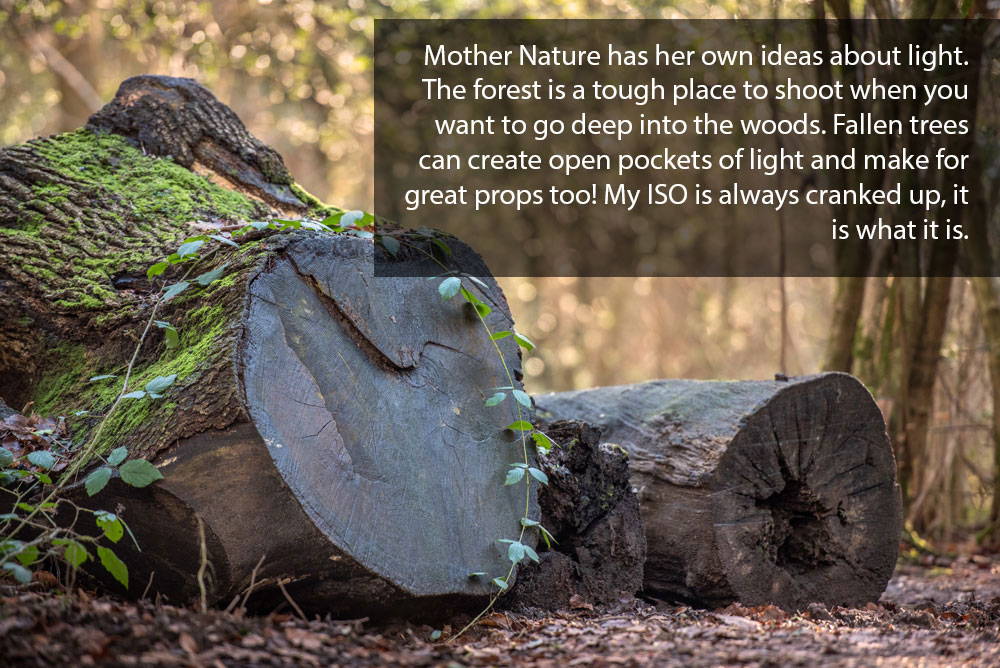
3. PREP: I tidy the area up and get rid of distractions - weeds, sticks and stones, anything that is in the way. It's quicker to chuck a stick out of the way than trying to edit the same stick out of 30 images afterwards.
I always set up the camera and make sure the client fully understands what I'm going to ask of them. Before we pester the dog, I get in position and take my test shots so we can move quickly through the shoot.
I haven’t photographed a dog yet that loved having their picture taken and their attention span can be anywhere between zero to limited. Treats and squeaky toys can help, but in my experience they don’t last long.
4. PHOTOSHOOT: Having an extra person behind me to get the dog’s attention is like a chilled glass of sparkly Prosecco on a balmy summer's night. So if possible, bring someone along or ask the client to. Just like the Prosecco, I'm always going to encourage it!
And, (just like when I've had a couple of glasses) I'm always flat out on the floor, getting down to eye level because it gives a much more intimate portrait and pulls the viewer into their world. I always aim the focus on the eye and always check the dog's eyes are catching the light. I equate no light in the eyes to a pointless day with a hangover, it was all for nothing.
5. PAUSE: Take a moment. I hang out with the dog and chat to the client, so the dog can relax as some find photoshoots quite stressful. It's supposed to be fun and I'm not afraid to call it quits when I see the dog has had enough. Always remember, the money shot is amazing but not at the dog's expense.
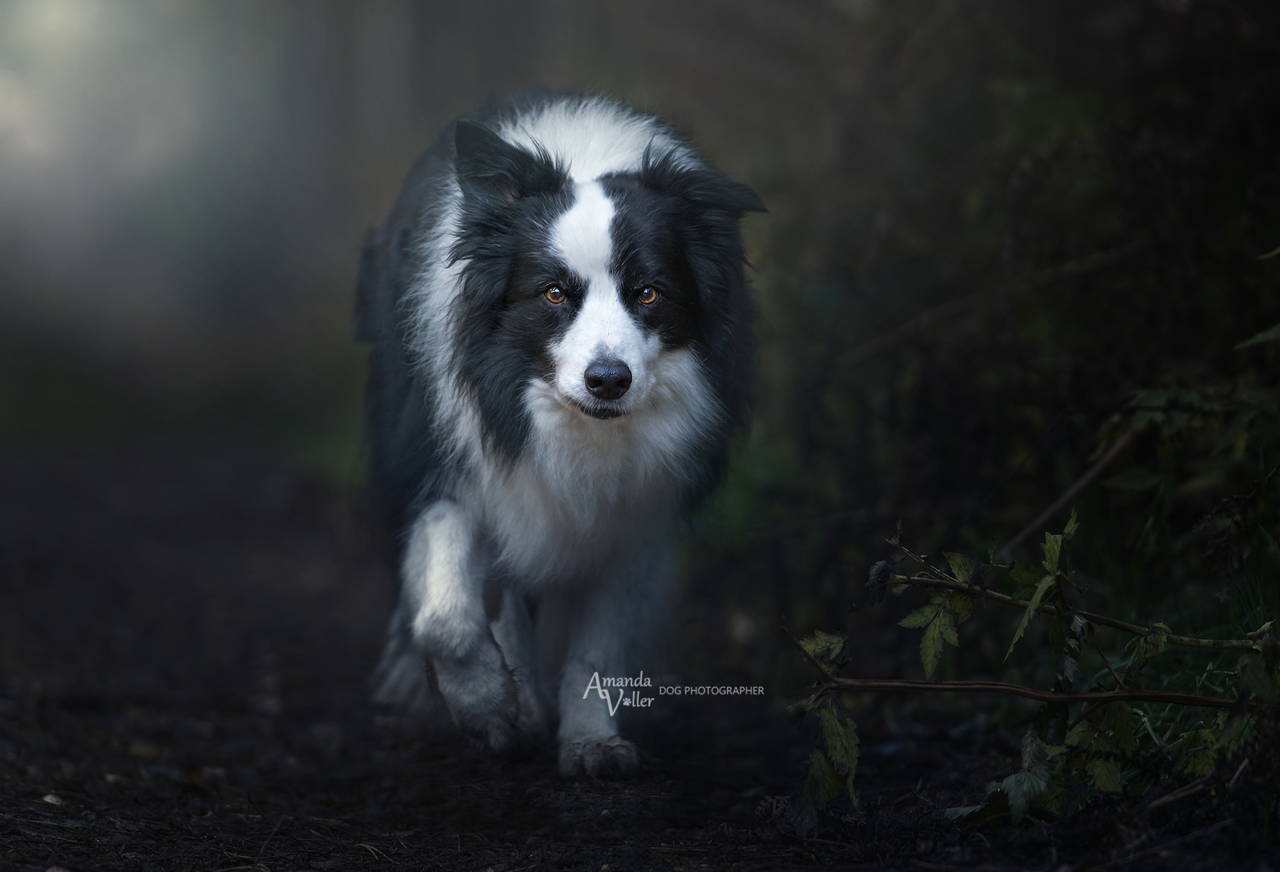
6. PERSONALITY: Pet photography comes in many shapes and forms. From the woodlands (my niche) to the beach - working dogs to sporting dogs to cutesie snugglers. The best approach is to make yourself identifiable and inject your own unique style and my advice is to pick the one that you connect with most and stick to it.
You will create a cohesive portfolio and build up a clientele who pick you for your style. I'm not shooting on a beach unless it's my own dog and I've got my picnic laid out! My only exception to woodland is shooting dogs on yards when I have a horse shoot.
7. EDITING IN PHOTOSHOP: This can be the world of make believe or just a tool to create a clean well balanced image. It's your artistic voice and no one else's. You can study and learn how it works for free on You Tube or you can buy some online classes.
I've done both.
Using Photoshop Actions enable you to edit faster and way more consistently. You don't want to get bogged down in the tech and end up over-thinking every pixel. There are many Photoshop actions for sale, I've tried them all! But, hand on heart, LSP Actions are fantastic. I use hand editing alongside the LSP Actions Fur Babies Pet & Dog Editing Workflow Suite. Always remember that colour and light will reflect the mood of your image. So, think carefully whilst planning your story. Obviously you don't have to use actions, but when editing full galleries where speed and consistency are vital, and you want to focus on your pure creativity without worrying about destroying the image, LSP Actions by Lemon Sky are just perfect.
— I'm a part of the LSP family. It's an incredible community, where the support never ends. You can join me in the LSP Actions Editing Group here, it's totally free to join for Photographers.
— Don't yet own Photoshop? You can get a month free trial of Adobe Creative Cloud Photoshop here.
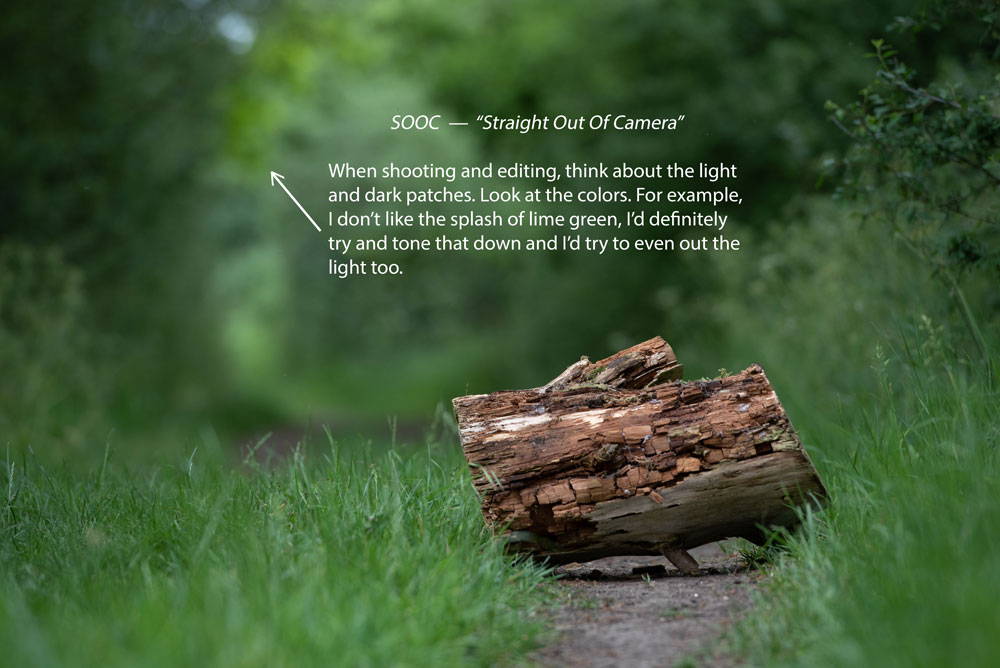
8. PLAYMATES: Having a group of photography friends is so important. You can support each other, learn from each other and have fun shooting together. It can also save your family and friends from boring them to death with non-stop talk of photography.
Be brave and reach out to people. You have nothing to lose but so much to gain. The wonderful friends I’ve made through photography need a mention, I’m so grateful to each and everyone of them. All extremely accomplished photographers. Karen Nicholson, Lisa Friday, Maraya, Deb Hall, Jackie Eke, Jane Hodges, Suzi Gardener, Gemma Sains and Rachel Stuart Illingsworth.
9. PHOTOGRAPHY WORKSHOPS: Lastly, never stop learning. As photographers/artists we need to keep on growing and developing our skills or we will lose the passion. When something becomes easy, it also gets boring. So, with this in mind I'm off for a dog photography workshop to learn some juicy tips and tricks from the very talented Caro Dell of Workingline Images. Go check her out, she's super talented and creates beautiful dog photography.
I hope that this advice was useful... this is my idea of a few brief sentences by the way! Please forgive me, I'm a photographer, not a writer.
Bonus points if you did get this far though as it proves that you have the patience and attention span that you need to learn dog photography.
Most of all, have fun!
Learn more about Amanda
Publications:
Do you want to edit stunningly purrfect pet pawtraits in Photoshop?
Click the image below to learn more about the LSP Actions Fur Babies Photoshop Action Editing workflow (as used by Amanda) for creating fine art pet images in photoshop Creative Cloud:

